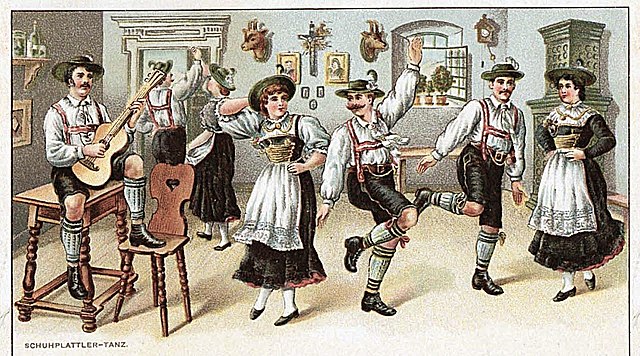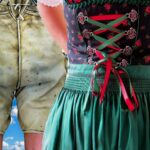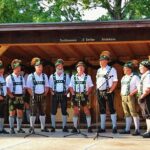
Schuhplattler is a traditional folk dance native to the Alpine regions of Bavaria in Germany and Tyrol in Austria. Renowned for its athletic leaps, impressive spins, and rhythmic clapping, Schuhplattler is a dance that carries the heritage, folklore, and history of its homeland in every step and stomp.
Historical Background of Schuhplattler
The origins of Schuhplattler date back to the Middle Ages, with its first documented reference appearing around the year 1050. This unique dance form emerged from the rural, mountainous regions of Bavaria and Tyrol, traditionally performed by peasants during community gatherings, festivals, and courtship rituals. The word “Schuhplattler” is derived from the German words “Schuh,” meaning shoe, and “Plattler,” meaning to slap, which perfectly captures the dance’s iconic shoe-slapping movement.
The Dance Style
Schuhplattler is a partner dance, typically performed in groups, with men and women dressed in traditional Bavarian attire: lederhosen for men and dirndls for women. One of the dance’s defining features is the men’s rhythmic slapping of their shoes and knees, mimicking the courting display of the Auerhahn, a bird native to the Alpine regions.
While the men perform these acrobatic moves, the women spin elegantly, keeping time with the music. The Schuhplattler is performed to traditional German folk music, usually played by a band with instruments like the accordion, zither, and various types of brass instruments.
Dance Performance
A typical Schuhplattler performance begins with the dancers in a circle, with the men on the inside and the women on the outside. The men then start the dance with a series of steps and jumps, hitting their shoes and knees in rhythm with the music. As the dance progresses, the circle breaks into pairs, with each man performing the “Schuhplattler” slaps in front of a woman.
The performance is not just a dance; it’s a spectacle. The swift, precise movements, the vibrant traditional costumes, and the lively music all contribute to an energetic and captivating display of cultural heritage. It’s no wonder that Schuhplattler performances are a highlight at Oktoberfest celebrations and other German and Austrian festivals.
Schuhplattler Today
Schuhplattler continues to be an integral part of Bavarian and Tyrolean culture, with numerous Schuhplattler Vereine (clubs) in Germany, Austria, and around the world dedicated to preserving and promoting this traditional dance form. These clubs often host dance lessons and performances, ensuring the tradition remains alive and vibrant for future generations.
Moreover, Schuhplattler has transcended its traditional boundaries, with performances now commonplace at international folk dance festivals and cultural exchange programs. This allows individuals globally to experience and appreciate this rich Bavarian tradition.
With its roots deep in history and tradition, Schuhplattler offers more than just a dance; it offers a journey into the heart of Bavarian and Tyrolean culture. It embodies the spirit of these regions, encapsulating the joy, community spirit, and love for tradition in its lively steps and rhythmic beats. As long as the music plays, the Schuhplattler will continue to tell the story of its people, captivating audiences one slap, leap, and spin at a time.
Related Articles:
Lederhosen & Dirndls: The History of Traditional German Clothing
A Glimpse from the Past: Traditional Bavarian Clothing
Traditional German Clothing – Dirndl and Lederhosen
The History and traditions of Lederhosen
German customs and traditions







